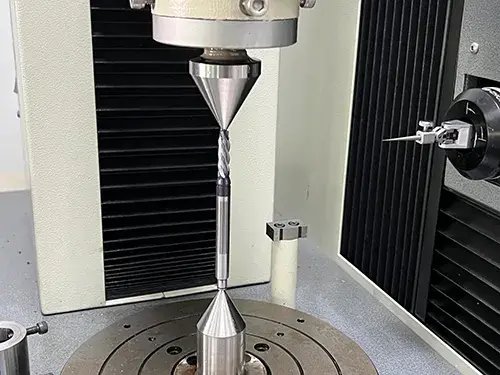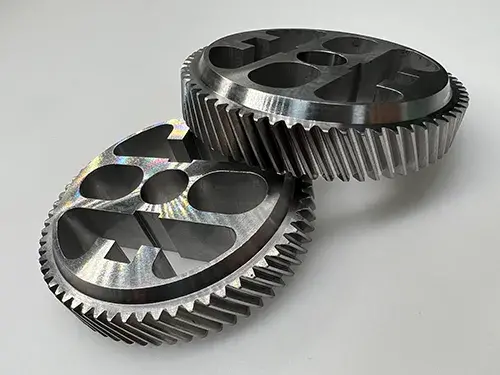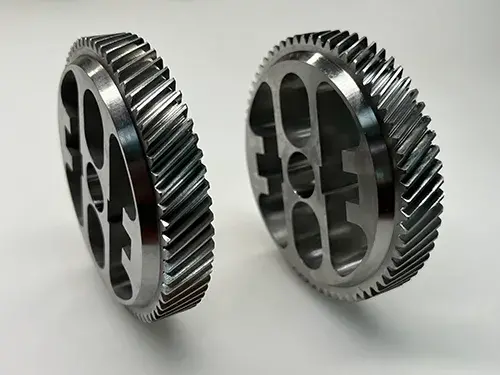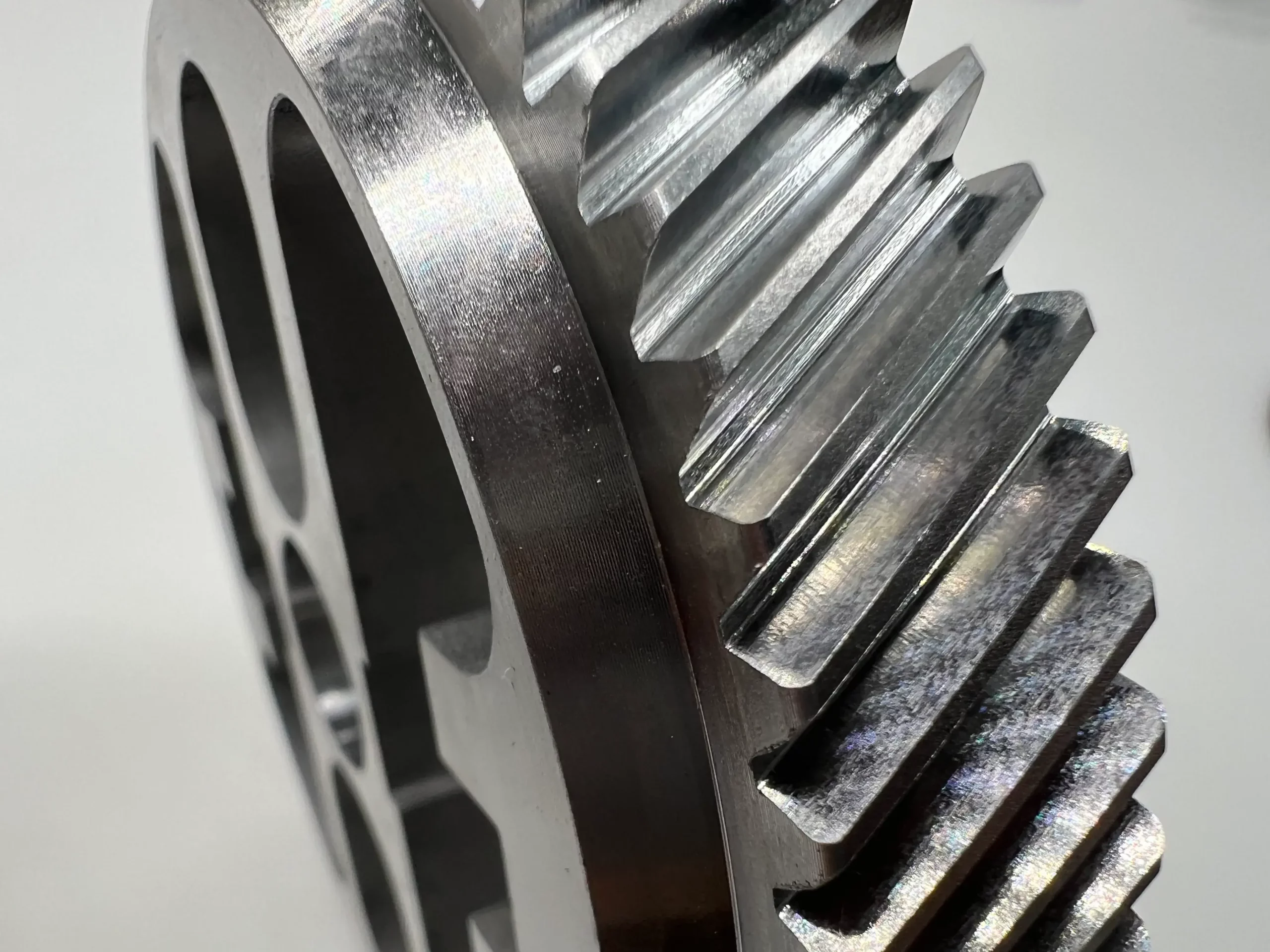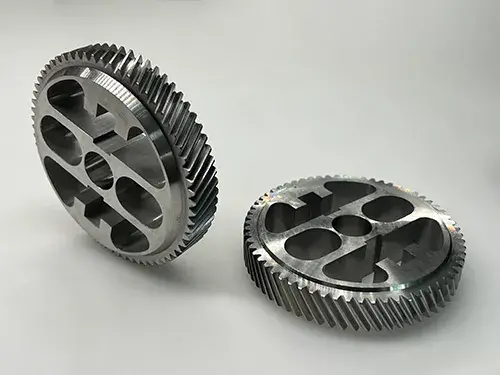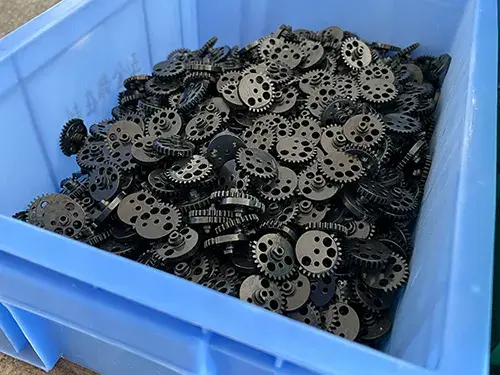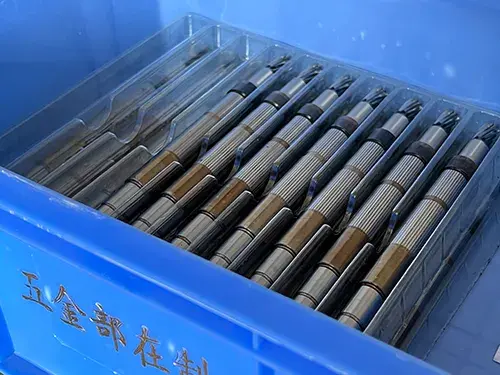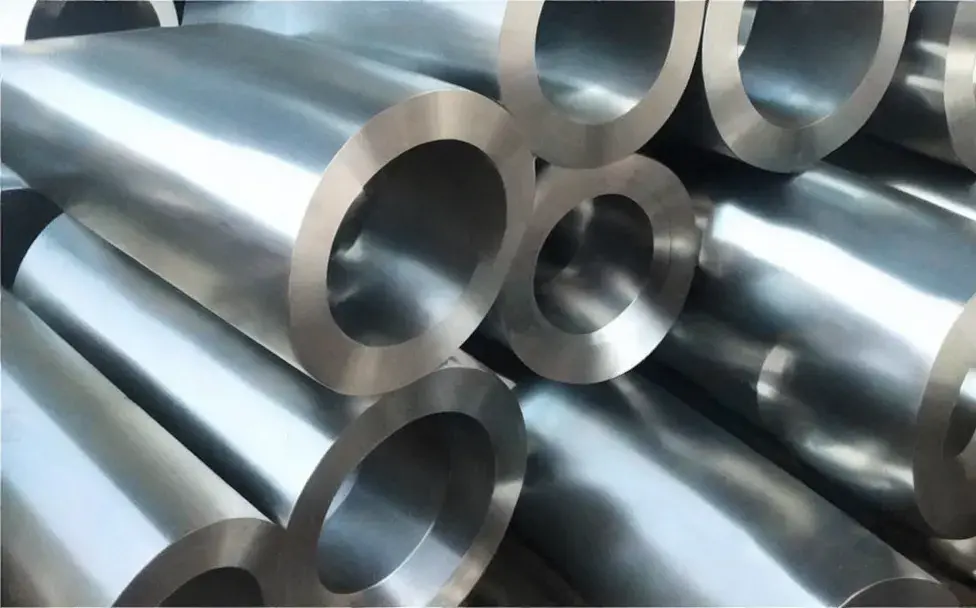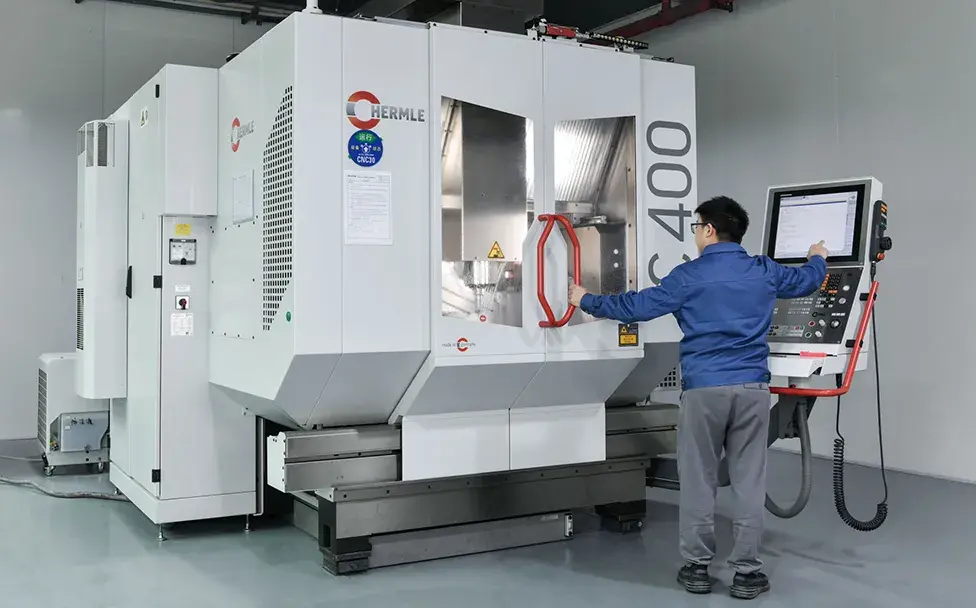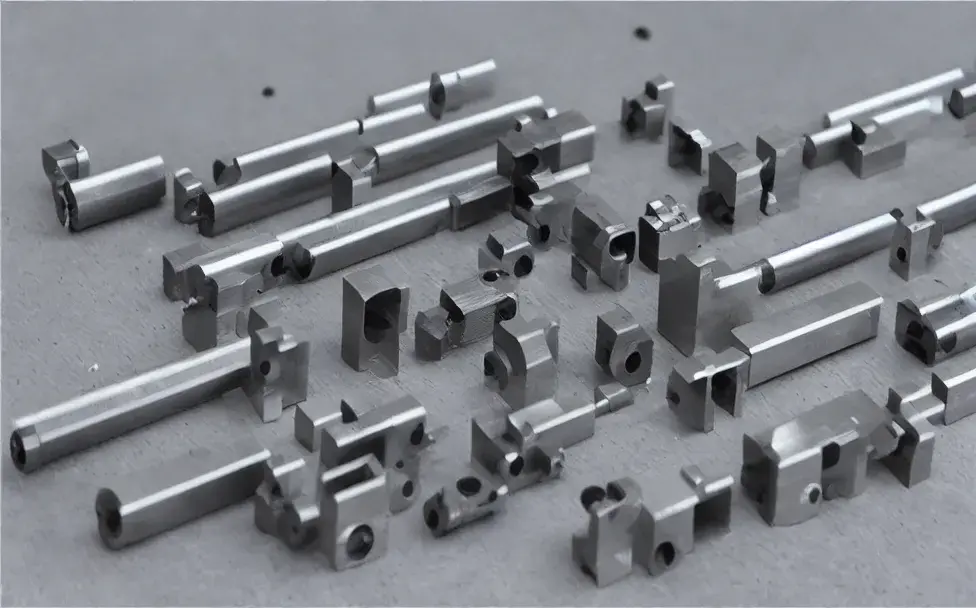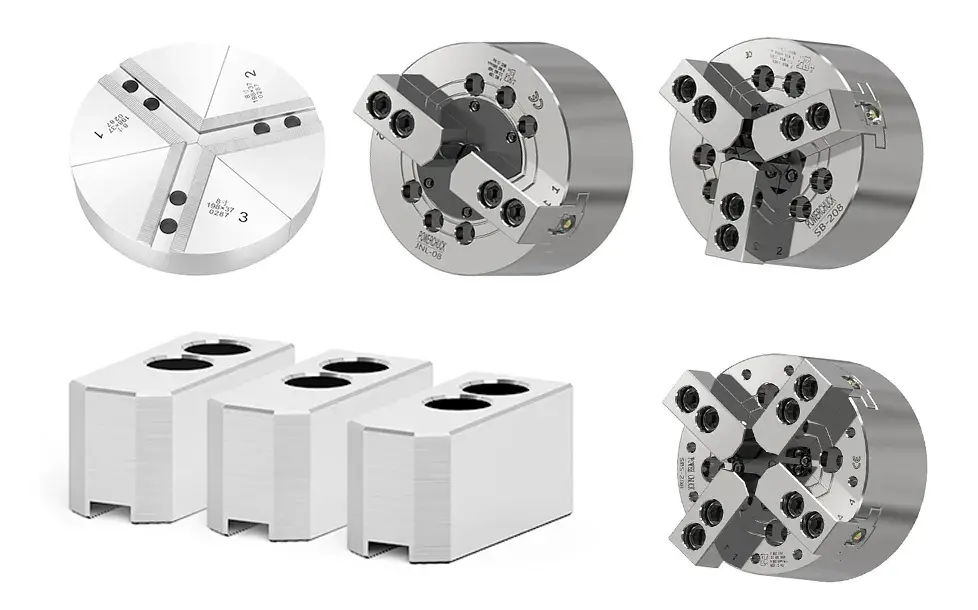What is gear hobbing and its importance in gear manufacturing
Gear hobbing is a gear manufacturing process that uses specialized machines and tools to cut the teeth of gears. Compared to other gear manufacturing methods, gear hobbing is highly efficient, precise, and cost-effective.
In gear manufacturing, the accuracy and quality of gears are crucial. Gear hobbing can produce high-precision, low-noise, and high-quality gear. Because gear hobbing cuts the gear teeth according to the precise design of the gear, it can make more accurate and stable gear teeth compared to other methods.
At Jinwang Hardware, we offer gear hobbing services and have our own independent gear production and manufacturing workshop and a temperature-controlled gear measurement and inspection laboratory. Our team has over 15 years of experience in gear manufacturing, specializing in precision gear cutting for electric tool shafts, automotive transmission gears, hydraulic pump gears, and more. Click here to view our gear hobbing products!!!
How Gear Hobbing Works: A Brief Overview
Gear hobbing involves using a specialized cutting tool, the gear hob, and a gear hobbing machine. The gear hobbing process starts with selecting the appropriate gear hob and workpiece and aligning them on the hobbing machine. Cutting oil lubricates the gear hob and workpiece to reduce friction and heat generation during cutting. The gear hob rotates at a specific speed and feeds into the workpiece at a predetermined rate, producing a new gear tooth with each revolution. The process continues until all gear teeth are cut to the desired shape and size. After the gear teeth are cut, the workpiece is inspected for accuracy and quality. Gear hobbing is highly efficient and can quickly produce large quantities of gears while maintaining high precision and quality.
The Functions of Gear Hobs and Cutters in the Gear Hobbing Process
Gear hobs and gear hob cutters play a critical role in gear hobbing. Gear hobs are specialized cutting tools with helical cutting edges corresponding to the gear teeth to be cut. Gear hob cutters are the teeth of the gear hob itself.
The gear hob is mounted on a hobbing machine, which holds the workpiece in place while the gear hob rotates and cuts into the workpiece to produce the gear teeth. The gear hob is designed to cut a precise gear tooth profile, and its helical cutting edges enable it to produce multiple teeth with each revolution.
The gear hob cutter is the cutting edge that comes into contact with the workpiece. Using the correct gear hob cutter for the desired gear tooth profile is essential, as using an incorrect cutter can result in inaccurate or poor-quality gear teeth. The gear hob cutter’s shape and dimensions are carefully designed to create the desired gear tooth profile. They are typically made from high-speed steel or carbide to withstand the cutting forces and maintain their cutting edge for longer.
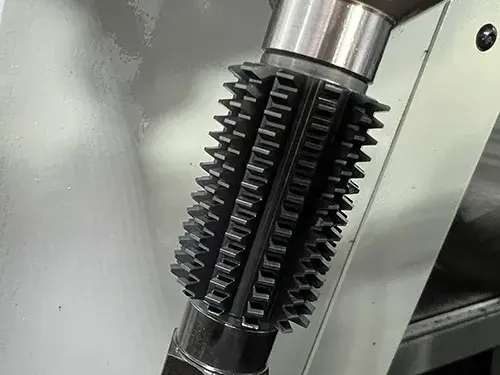
Advantages of Hobbing for Precise Gear Cutting Compared to Other Methods
| Comparison table of gear precision grades in various countries | ||||||||||||
| Standard | Level of accuracy | |||||||||||
| ANSI | 4 | 3 | 2 | 1 | ||||||||
| AGMA | 16 | 15 | 14 | 13 | 12 | 11 | 10 | 9 | 8 | 7 | 6 | |
| JIS | 0 | 1 | 2 | 3 | 4 | 5 | 6 | 7 | 8 | |||
| ISO | 1 | 2 | 3 | 4 | 5 | 6 | 7 | 8 | 9 | 10 | 11 | 12 |
| GB | 3 | 4 | 5 | 6 | 7 | 8 | 9 | |||||
| DIN | 1 | 2 | 3 | 4 | 5 | 6 | 7 | 8 | 9 | 10 | 11 | 12 |
| BS | A1 | A2 | B | C | D | |||||||
| FN | A | B | C | D | E | |||||||
Benefits of gear hobbing:
- Accuracy: Gear hobbing is a highly accurate gear-cutting method that produces gears with precise tooth profiles and proper spacing and alignment. This makes gear hobbing ideal for applications requiring high precision and repeatability levels.
- Efficiency: Gear hobbing is a fast and efficient gear-cutting method that can produce gears quickly and accurately. This makes gear hobbing ideal for high-volume manufacturing applications.
- Versatility: Gear hobbing is a versatile gear-cutting method that can produce various gear types and sizes. This makes gear hobbing ideal for multiple applications, from small gears used in watches to giant gears used in heavy machinery.
- Cost-effectiveness: Gear hobbing is a cost-effective gear-cutting method that can produce high-quality gear relatively cheaply. This makes gear hobbing an attractive option for manufacturers looking to balance quality and cost in their gear manufacturing processes.
Other methods:
- Gear shaping: Gear shaping is a gear-cutting method that involves using a reciprocating cutting tool to cut gear teeth. Unlike gear hobbing, which uses a rotating cutting tool, gear shaping requires the workpiece to be held in place and moved back-and-forth. Gear hobbing is generally faster and more efficient than gear shaping, but gear shaping may be preferred for certain gear types and sizes.
- Gear milling: Gear milling is a gear-cutting method that uses a milling cutter to cut gear teeth into the workpiece. Gear milling is typically slower than gear hobbing, and the resulting gear teeth may need to be more accurate. However, gear milling can be used to produce a broader range of gear types and sizes.
- Gear grinding: Gear grinding is a gear-cutting method that uses a grinding wheel to remove material and shape the gear teeth. Gear grinding is typically slower than gear hobbing, and the resulting gears may have a smoother surface finish. However, gear grinding is generally more expensive than gear hobbing and may be reserved for high-precision applications.
Industries Using Gear Hobbing and Types of Gears Produced
Gear hobbing is a widely used gear manufacturing process that is employed in a variety of industries, including:
- Automotive: Gear hobbing is used extensively in the automotive industry to produce gears used in transmissions, differentials, and other drivetrain components.
- Aerospace: Gear hobbing is used in the aerospace industry to produce gears used in aircraft engines, landing gear, and other components.
- Industrial machinery: Gear hobbing is used in producing gears used in industrial machineries, such as pumps, compressors, and turbines.
- Consumer goods: Gear hobbing is used in producing gears used in consumer goods such as watches, cameras, and power tools.
Types of gears that can be produced through gear hobbing:
- Spur gears: Spur gears are cylindrical gears with straight teeth that are parallel to the axis of rotation. Spur gears are the most common type of gear produced through gear hobbing.
- Helical gears: Helical gears have teeth cut at an angle to the axis of rotation, resulting in a smoother and quieter operation than spur gears.
- Bevel gears: Bevel gears have teeth cut on a cone-shaped surface rather than a cylinder, allowing them to transmit power between non-parallel shafts.
- Worm gears: Worm gears are used when a large reduction ratio is required, such as in the case of a speed reducer. The worm gear is a type of gear with a screw-like shape that meshes with a gear with straight teeth.
- Internal gears: Internal gears have teeth on the inside of the cylinder rather than the outside. These gears are used in applications where the gear needs to be inside a hollow space.
Gear hobbing on a lathe: process, advantages, and limitations
The lathe rotates the workpiece while the hobbing tool cuts into the material to create the gear teeth. The advantage of using a lathe for gear hobbing is that it allows for greater flexibility and customization compared to other gear hobbing machines. However, gear hobbing on a lathe also has some limitations, such as slower production rates and the requirement for highly skilled operators.
The process of gear hobbing on a lathe typically involves the following steps:
- Blank workpiece preparation: The blank workpiece is selected and prepared according to the specifications of the gear to be produced.
- Mounting the workpiece: The blank workpiece is mounted on the lathe and secured.
- Setting up the hobbing tool: The hobbing tool is selected according to the gear specifications.
- Initial Setup: The operator sets the lathe to the correct speed and feeds for the hobbing tool.
- Cutting the teeth: The hobbing tool is brought into contact with the blank workpiece, and the teeth are cut into the material.
- Finishing: Once the teeth are cut, the gear is inspected, and any necessary finishing operations are performed to ensure the correct fit and function.
Overall, gear hobbing on a lathe is a versatile and customizable process that can produce a wide variety of gears. However, it may not be as efficient as other gear-hobbing methods.
Types of CNC Gear Hobbing Machines
CNC gear hobbing machines offer several advantages over traditional gear hobbing machines. One of the main benefits of using CNC gear hobbing machines is that they provide greater precision and consistency in gear production. CNC gear hobbing machines also offer increased automation, which can improve production rates and reduce the need for manual labor. Additionally, CNC gear hobbing machines often have advanced features and software that can improve efficiency and reduce errors.
There are several types of CNC gear hobbing machines, each with unique capabilities and strengths.
Here are a few examples:
- Horizontal CNC gear hobbing machine: This type of machine 6can produce a wide range of gears, including spur gears, helical gears, and worm gears. It is often used for high-volume production and can produce gears with a high degree of accuracy.
- Vertical CNC gear hobbing machine: This type of machine is typically used for large gear production, such as those used in heavy machinery or wind turbines. It is capable of producing large gears with a high degree of precision.
- 5-axis CNC gear hobbing machine: This type of machine can produce complex gears with multiple axes. It is often used for high-precision and custom gear production.
- CNC gear hobbing lathe: This type of machine combines the capabilities of a lathe with the precision of CNC gear hobbing. It is often used for custom and low-volume gear production.
Recap of the gear hobbing process
Gear hobbing is a gear manufacturing process that involves using a gear hob and gear hob cutter to create gear teeth on a blank gear. The hob and cutter rotate at high speeds while the blank gear is fed into the machine, creating precise and uniform gear teeth.
On the other side, it offers a high level of precision and consistency that is difficult to achieve with other gear cutting methods. The ability to produce gears with a high degree of accuracy and uniformity is essential in many industries, such as automotive, aerospace, and industrial machinery. Gear hobbing also offers the flexibility to produce various gear types, making it a versatile and widely used process in gear manufacturing. Without gear hobbing, it would be much more difficult and time-consuming to produce high-quality gears that meet the strict requirements of various industries. Therefore, gear hobbing is crucial in ensuring many mechanical systems’ reliability, durability, and performance.

